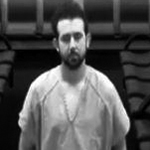In the era of digital media, criminal behavior has expanded to include a range of offenses involving the use of technology to exploit and harm children. Among these, the federal crime of producing, distributing, or possessing “Obscene Visual Representations of the Sexual Abuse of Children” stands as one of the most serious offenses, carrying severe penalties under U.S. law. Codified under 18 U.S.C. § 1466A, this law is a powerful tool in the fight against child exploitation.
Offense Description:
The federal statute 18 U.S.C. § 1466A criminalizes creating, distributing, or possessing obscene visual representations of a minor engaging in sexually explicit conduct. This can include not only material involving actual minors, but also any image that appears to depict a minor engaged in sexual activity. The crime therefore covers a broad range of illicit material and is not limited to so-called “child pornography.”
How Defendants are Caught:
There are several ways in which defendants charged under 18 U.S.C. § 1466A are often apprehended:
1. Online Investigations: Many offenders are discovered through online investigations conducted by federal agencies, such as the FBI or the Department of Homeland Security. These can involve sting operations or the monitoring of certain online forums and file-sharing networks.
2. Tip-offs and Reporting: Defendants can also be identified through tips from the public, reports from internet service providers under the Digital Millennium Copyright Act, or notifications from international child protection agencies.
3. Forensic Examinations: In some cases, evidence of such crimes is discovered during forensic examinations of computers or other devices seized in relation to other crimes.
4. Child Exploitation Investigations: Ongoing investigations into child exploitation rings often lead to the identification and apprehension of individuals involved in creating, distributing, or possessing obscene material involving minors.
Potential Defenses:
Defending against charges under 18 U.S.C. § 1466A can be challenging but there are several legal strategies that can be employed, depending on the circumstances of the case:
1. Challenging the Obscenity of the Material: One possible defense is to argue that the material in question is not “obscene” within the legal definition of the term.
2. Challenging the Age of the Depicted Individual: Another defense strategy might involve challenging the assertion that the depicted individual is, or appears to be, a minor.
3. Challenging the Possession or Intent: A defense may also be built around challenging whether the defendant knowingly possessed the material or intended to distribute it.
4. Violations of Constitutional Rights: If there were procedural errors in the search or seizure of evidence, or if the defendant’s rights were violated in the process of the investigation, it may be possible to suppress such evidence.
Relevant Federal Criminal Statutes:
In addition to 18 U.S.C. § 1466A, several other federal statutes can come into play, including:
18 U.S.C § 2251 (Sexual Exploitation of Children): This law targets those who employ, use, persuade, induce, entice, or coerce a minor to engage in any sexually explicit conduct for the purpose of producing visual depictions of that conduct.
18 U.S.C § 2252 (Certain activities relating to material involving the sexual exploitation of minors): This law criminalizes the transportation, distribution, receipt, selling, or possession of any material involving the sexual exploitation of minors.
Potential Penalties:
Penalties under 18 U.S.C § 1466A are severe. A person convicted under this statute can face up to 20 years in prison for creating or distributing such material and up to 10 years in prison for possession. The exact sentence can vary depending on the defendant’s criminal history and other factors.
The federal crime of “Obscene Visual Representations of the Sexual Abuse of Children” is a grave offense, reflecting the serious commitment of the U.S. government to protect minors from exploitation. For those charged under 18 U.S.C § 1466A, understanding the nature of the charges, how they are typically enforced, potential defense strategies, and the relevant statutes can be critical. As a Criminal Defense Attorney in Florida, I stand ready to assist individuals facing such serious charges, providing dedicated, expert representation in their time of need.
Federal charges involving “Obscene Visual Representations of the Sexual Abuse of Children” can carry grave consequences and severe penalties. If you’re caught in this intricate legal web, it’s crucial to promptly engage a skilled legal counsel to safeguard your rights and pursue an optimal resolution. As a knowledgeable Federal Sex Crime Defense Attorney from our firm, I am prepared to provide comprehensive legal aid, assist you through the complexities of the federal criminal process, and relentlessly advocate for your interests. In these matters, time is of the essence, and it’s crucial to consult with an adept attorney at the earliest to analyze your case and explore your defense options.
Facing a federal criminal charge can be intimidating, and your immediate resort should be Musca Law, P.A., a notable Federal Sex Crime Defense law firm renowned for its unmatched legal expertise. With a wide network that includes 30 offices across Florida — from Miami to the Panhandle, through Orlando, Tampa, Key West, and beyond — we can ensure our services are accessible and convenient for our clients. Our team of seasoned Criminal Defense Attorneys stands ready around the clock, offering free consultations and hearing support. To build a strong defense against “Obscene Visual Representations of the Sexual Abuse of Children” charges, don’t hesitate to contact us at 1-888-484-5057.



















